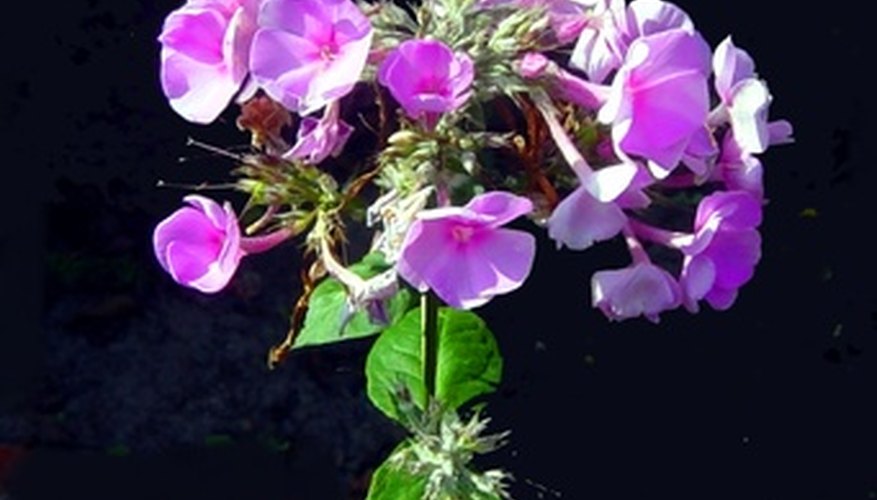Garden phlox are beautiful, 2- to 3-foot-tall perennials with a great fragrance. Distinct from the groundcover creeping phlox, which requires only minimal care, garden phlox can be a delicate plant to grow, with specific care needs throughout the growing season. However, their lovely colours and old-fashioned grace make them well worth the effort. Pruning phlox is among the considerations for any gardeners cultivating this traditional plant.
Cutting Back Phlox
Phlox needs to be cut back twice in the growing season: periodically, after each flower finishes blooming, known as deadheading, and once after frost. Cutting back phlox requires different techniques for these different times, with more aggressive trimming needed in early winter, and careful removal of spend flowers during the summer.
Deadheading Phlox
Flowers that have withered need to be removed weekly during the summer growing season. This practice of deadheading allows new flowers to emerge, and prolongs the phlox growing season. Gardeners can use small pruning shears to deadhead, or pinch off wilted flowers. Towards the end of the growing season, usually mid-fall, stopping deadheading allows the phlox to set seed. This allows the plant to spread. For a cottage garden, this natural self-seeding can create charming, natural effects in flowers beds, instead of a more artificial, planted look.
- Flowers that have withered need to be removed weekly during the summer growing season.
- This practice of deadheading allows new flowers to emerge, and prolongs the phlox growing season.
Pruning Phlox
At the end of the season, normally after a hard frost, cutting back phlox substantially prevents much winter damage to the perennial. Gardeners can use larger pruning shears, or hedge trimmers for very large phlox, and leave only 2 inches to 4 inches of plant stem. Mulching can further prevent winter damage to the plants.
Flower Arrangements and Taking Cuttings
In addition to cutting back for the sake of plant health or extended bloom, many gardeners trim phlox regularly to bring the flowers indoors for flower arrangements. These attractive, fragrant flowers are great in casual arrangements, and can provide weeks of flowers, if gardeners cut only a few stems per plant, usually from the outside. In addition, some people propagate perennials with cuttings. Taking only the healthiest stems, preferably those not in flower or about to flower, makes for the most flourishing plants grown from cuttings.
- In addition to cutting back for the sake of plant health or extended bloom, many gardeners trim phlox regularly to bring the flowers indoors for flower arrangements.
- These attractive, fragrant flowers are great in casual arrangements, and can provide weeks of flowers, if gardeners cut only a few stems per plant, usually from the outside.
